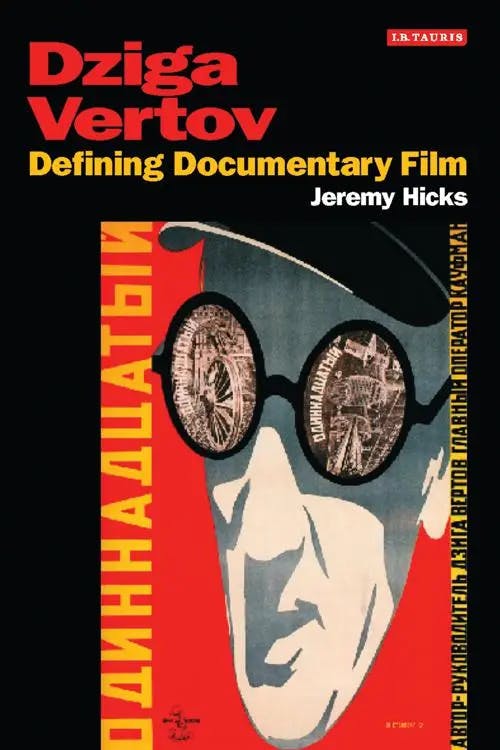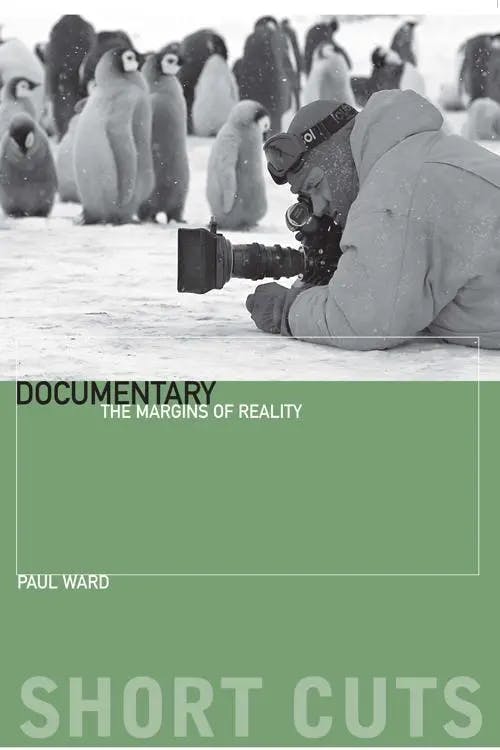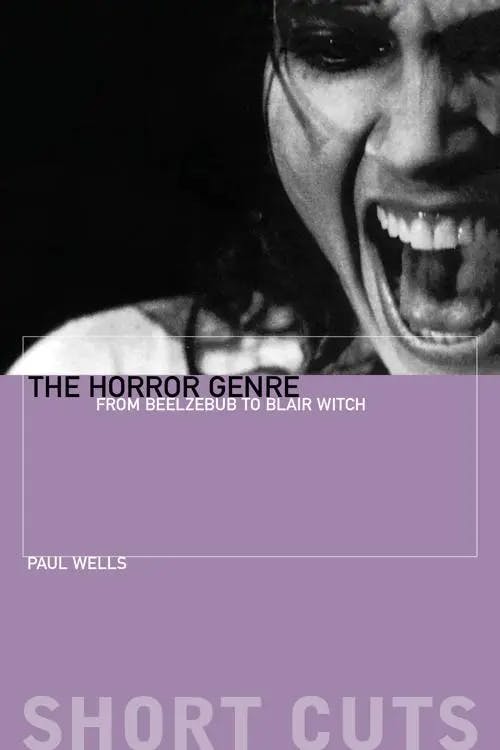What is Cinema Verité?
PhD, Media Arts (Royal Holloway, University of London)
Date Published: 27.06.2023,
Last Updated: 20.07.2023
Share this article
The origins of cinema verité
We have come to expect certain conventions from documentary films; spontaneous and natural dialogue, real spaces and real people, a direct address of the camera to name a few. Most importantly perhaps, we expect documentaries to tell us the truth. But what exactly does that truth-telling entail? And how did these documentary conventions come to be? Cinema verité provides answers to these questions.
Cinema verité is a style of documentary-like filmmaking that translates to “truthful cinema”, developed by Egdar Morin and Jean Rouch in the late 1950s. These two French thinkers based this new cinematic philosophy on Dziga Vertov’s Kino-Pravda, a series of short documentary clips released in 1922. Kino-Pravda reflected Vertov’s wider approach to the moral, structural and functional questions that permeated footage of real people, places, and things. Jeremy Hicks describes Kino-Pravda in Dziga Vertov, claiming,
Vertov’s greatest works combine unstaged footage ingeniously so as to unleash a tremendous rhetorical force. They distil the sensibilities of newspaper column and Futurist poem into non-fiction feature films of incredible power and sophistication. In other words, they are classic documentaries.
Jeremy Hicks
Vertov’s greatest works combine unstaged footage ingeniously so as to unleash a tremendous rhetorical force. They distil the sensibilities of newspaper column and Futurist poem into non-fiction feature films of incredible power and sophistication. In other words, they are classic documentaries.
Despite exhibiting this now-recognizable documentary form, Kino-Pravda was profoundly innovative for the time and the combination of avant-garde use of newsreel footage, and a commitment to a cinema of truth, was perplexing to Vertov’s contemporaries. Vertov took pieces of footage that showed the world as it was – ‘fly-on-the-wall’ style scenes from real life scenarios – but he experimented with their compilation in a way that uncovered a new, more latent truth than what could be garnered from the footage alone. It was Vertov’s position that the camera could provide a new dimension of truth not available to the subjective eye, and the intervention of the filmmaker and editor could generate new connections and, hence, new meaning to the observational footage. By way of exemplifying this effect, parts of Kino-Pravda can be watched here:
In the late 1950s, major changes in film technologies allowed Morin and Rouch to take Vertov’s effort towards a cinematic truth and expand on it, practicing observational cinema cheaply and easily. These figures helped to fully realize the potential of the shrinking camera sizes and its newfound hand-held portability. Sound and image were now synchronized – captured all at once – and single takes could be longer than before. These technological advances, along with Vertov’s “truth film” philosophy, gave rise to what we now call cinema verité.
Cinema verité did not foremostly seek to educate or explain its subject to the viewers. Instead, it let the audience simply observe through the eyes of the camera and filmmakers. The shots are often long, with shaky camera work, sometimes without frequent cuts or narration. A guiding principle of cinema verité was that the presence of the camera would inevitably change the scene being captured. The reality of verité was only ever a reality contingent on the subject’s interaction with the camera and filmmakers; a reality independent of these interactions was inaccessible to film. This led Morin and Rouch to contemplate the way the documentary filmmaking process affected the behaviors of its subjects, conceding that these behaviours - whatever degree they were performative for the camera - were another important dimension of documentary truth.
This was highly innovative thinking at the time, although much of the considerations of Morin and Rouch, as we will see, reflect common documentarian practices today. As John Ellis accounts in Documentary,
Ordinary behaviour was on display, with all of its mistakes and hesitations. Documentaries tried to explore this further: it was one of the most elusive goals of cinema verité to discover how ordinary people went about their lives. People were invited to give accounts of themselves, to speak in their own words, to reveal themselves. Since the early 1960s, many television documentaries have tried to highlight the ordinary and the typical as part of their social mission. People could be exemplary in their ordinariness… To supply the answer to these questions about self, about the nature of ‘being ordinary’, individuals have to reveal themselves in public, exposing their private behaviours for general inspection.
John Ellis
Ordinary behaviour was on display, with all of its mistakes and hesitations. Documentaries tried to explore this further: it was one of the most elusive goals of cinema verité to discover how ordinary people went about their lives. People were invited to give accounts of themselves, to speak in their own words, to reveal themselves. Since the early 1960s, many television documentaries have tried to highlight the ordinary and the typical as part of their social mission. People could be exemplary in their ordinariness… To supply the answer to these questions about self, about the nature of ‘being ordinary’, individuals have to reveal themselves in public, exposing their private behaviours for general inspection.
This illustrates the room that Rouch and Morin left for their subjects to be changeable, inconsistent even, and the way that they assimilated these idiosyncrasies into their own definition of the real. This approach extended to all facets of verité, resulting in a cinematic style that accepted the interference of the filmmaking process with the reality that process sought to reveal.
Cinema verité was fundamentally committed to an authentic film experience, one that left the ambiguities, the emotional complexities, spontaneity, and changeability of life intact. It embraced the potential of filmmaking to interfere with reality, rather than sought to eliminate it, which has become an important aspect of a wide range of cinematic genres today.
Key characteristics of cinema verité
Some of the key characteristics of cinema verité are as follows:
- Shot on hand-held cameras
- Filmed on location
- Natural lighting
- Featuring real people
- Shaky camera work
- Camera moves with the action
- Every-day stories
- Emotional / political underpinnings
- Acknowledgement of the filmmaking process
- Investigative/ interventionist approach
Examples of cinema verité
By the 1960s hand-held cameras could capture both the sights and sounds of a real-life location, outside of the elaborate set-ups of studios. As a result of this, a more passive reality became significantly more observable to the camera eye. The film that first introduced the verité style - experimenting with this new cinematic potential - was Chronicle of a Summer (1960), directed by Morin and Rouch. Chronicle of a Summer follows the everyday lives of Parisians. As well as being filmmakers, Morin was a sociologist and Rouch, an anthropologist, so at times they approach their subjects as studies, and the documentary, a form of research. At the beginning of Chronicle of a Summer, Morin and Rouch appear, candidly talking about the challenges of the project. They wanted a naturalist representation of people’s lives, but they considered that their subjects’ actions and behaviors would inevitably be altered by the very presence of the camera. So, they chose to film people’s response to a simple prompt: ‘are you happy?’ This, they decided, was how they were going to get their subjects to converse. Including this discussion of the filmmaking process - this decision making - in the film itself, shrinks the divide between the filmmaking and the filmic subjects, contextualizing the on-screen reality with the reality behind the camera.
Much of Chronicle of a Summer is made up of clips of Parisian pedestrians being asked about their happiness, revealing a variety of perspectives on life. Some seem frightened by the solicitation, others annoyed, but many engage, revealing details of their family lives, their working conditions, their age, and finances. A sample of these answers can be watched here:
Other parts of the film take place in the comfort of the subjects’ homes, creating a contrast between their public and private lives. This gives viewers the sense that Morin and Rouch have built a trusting relationship with their subjects; that they are being let into their interior life, again allowing the viewer to contemplate the every-day potential of performance.
Betsy McLane observes, in A New History of Documentary film, that what Chronicle of a Summer,
offers is a chance to understand something of the interviewees and of their culture, their positions within it, and their feelings about it. The filmmakers’ purpose and approach seem to be that of interior discovery and revelation. The Parisians are modern, urban and articulate. Their concerns, as well as those of the filmmakers, are about their feelings rather than about the work they do or how they do it.
Betsy A. McLane
offers is a chance to understand something of the interviewees and of their culture, their positions within it, and their feelings about it. The filmmakers’ purpose and approach seem to be that of interior discovery and revelation. The Parisians are modern, urban and articulate. Their concerns, as well as those of the filmmakers, are about their feelings rather than about the work they do or how they do it.
This sense of feeling is garnered through the reactions of the film’s subjects – whether they are sincere or coloured by the filmmaking process - captured through a meandering and shaky lens that moves as an independent entity through the scene. Devices like this, paired with the investigative nature of Morin and Rouch’s presence, constantly remind the viewers of the filmic process, that the film technology and the directorial eye is a crucial part of what is being watched. To emphasize the making of Chronicles of a Summer, the end of the film shows the subjects watching footage of themselves back. They are asked to provide insight to the filmmakers into how authentic they believed themselves to be acting, and the extent to which the scenes were “real”. This, again, confronts the limits of documentary, suggesting that performance to any extent, may just be an extension of the “real” rather than its antithesis.
As McLane proposes, “This is a film being made by Rouch and Morin, they seem to be saying, and here we are so you can see how we are going about it” (2013). This was an important element of cinema verité. Because Morin and Rouch did not believe that objectivity was wholly achievable in documentary film, they chose to reveal the filmmaking process and show their own intervention as a way of simultaneously highlighting the limitations of documentary and more closely approximating cinematic truth. As P Ward outlines in Documentary: The Margins of Reality,
Rouch and Morin develop a specific style that plays upon their role as filmmakers, and their ability to have an effect upon and shape the material they are filming. As some critics have made clear, this marks them out as very different from the American vérité practitioners… because of the way Rouch and Morin view interaction between filmmaker and filmed as an intrinsically positive and productive thing (2006).
Paul Ward
Rouch and Morin develop a specific style that plays upon their role as filmmakers, and their ability to have an effect upon and shape the material they are filming. As some critics have made clear, this marks them out as very different from the American vérité practitioners… because of the way Rouch and Morin view interaction between filmmaker and filmed as an intrinsically positive and productive thing (2006).
Cinema verité vs. direct cinema
Cinema verité had all the hallmarks of an observational style that emerged simultaneously in several different parts of the world. Cinema verité, ‘fly-on-the-wall’ documentary, and ‘direct cinema’ are terms that are often used interchangeably. But they refer to slightly different filmic movements and styles. In particular, direct cinema and cinema verité are often conflated, with the former seen simply as the American practice of the latter. Although these two documentary styles have their similarities – a commitment to truth and making the most of new filmic technologies – they have nuanced differences. Direct cinema was a North American documentary movement developing around the late 1950s, early 1960s. Its aesthetic was characterized by the same lightweight, synchronized technology that made cinema verité possible, resulting in the same shaky, meandering camera work. This allowed for a similar, natural dialogue to be captured with a very similar aesthetic.
Where direct cinema and cinema verité differ is in their respective approaches to objectivity. While the filmmakers of cinema verité believed the pursuit of objectivity to be fruitless, direct cinema considered it the responsibility of documentary to capture the objective world. This facilitated a commitment to ‘fly-on-the-wall’ filming, a British term that describes a documentary style where the camera and film crew go unacknowledged, as if they are not there. Not the filmmakers nor the equipment has any presence within the scene. This extends to the filmmaking decisions; the shots are long and uncut, the editing is minimal and the director has no obvious hand in the unfolding of the action. As Ellis confirms, direct cinema described,
the effect of a small film crew spending a considerable time with their subjects. They hoped to become self-effacing, like a fly on the wall, allowing events to unfold without reference to the three or four people sitting in on domestic or professional events, undertaking their own private rituals of tending their equipment. (2011)
This non-interventionist approach to documentary - a key characteristic of direct cinema – can be observed in this clip from Bob Dylan: Don’t Look Back (D.A. Pennebaker, 1967):
Rather than cutting between shots that show different people in different parts of the room, the camera moves around, replicating the natural movement of the eye. This – along with the complete lack of narration or presence of the filmmakers - minimizes the attention drawn to the means of filmmaking.
As we have seen, cinema verité took a different approach. While much of their footage could be described as ‘fly-on-the-wall’, Morin and Rouch believed that objectivity was inaccessible to the camera; its very presence altered what it sought to capture. Their answer to this was to actively investigate the way this reality interacts with the filmmaking process, resulting in a highly interventionist method. Meanwhile, direct cinema hoped to capture reality by strictly observing without interfering. Despite being borne from the same technological development, this fundamental philosophical difference and approach make cinema verité and direct cinema distinct from one another. Both, however, are hoping to enact a certain type of truth-telling, experimenting with the boundaries and responsibilities of documentary filmmaking.
Cinéma verité and contemporary cinema
Cinema verité has become a recognized style of documentary. Wielding the intimacy that technological advances afforded, it heralded a new aesthetic of film, one that is still in use today. Many documentarians have taken on the approach of Morin and Rouch, as they actively investigate their subjects. For example, Michael Moore, despite being the producer and filmmaker of his documentaries, constantly appears on screen, guiding, and interacting with, the world of the film. In Moore’s case, this is usually with the intention to uncover the political backwardness of the U.S. In the following clip from Bowling for Columbine (Moore, 2002), we can see the hand-held, constantly moving camera work, the spontaneous, conversational dialogue, and the interaction between filmmaker and filmic subject that were such key characteristics in cinema verité:
The same approach, where the filmmaker plays with the way in which they affect changes in the reality they capture, can also be observed in documentaries lead by figures like Nick Broomfield (e.g Ghosts (2006), Last Man Standing (2021)) and Louis Theroux (e.g. My Scientology Movie (2015), Louis Theroux’s Weird Weekends (1998-2000)).
The aesthetic that the project of cinema verité produced is recreated in works of narrative cinema as well. The Blair Witch Project (1999) is an iconic example of a film that appropriates the cinema verité style to heighten the realism – and hence the effect – of the fictional horrors that take place. As Paul Wells describes The Blair Witch Project in The Horror Genre,
Three student film-makers who are undertaking research about a legendary witch and a number of unsolved child murders in the region many years before have filmed this material but are now missing, presumed dead. This then is ‘amateur’ footage, seemingly shot with inexperienced eyes and limited technique, and thus, ironically, possessing greater veracity and authenticity in its verité approach. Whatever the audience sees, it is suggested, actually happened. Shot from the point-of-view of the characters, it offers no objective place for the viewer to watch their experiences from.
Paul Wells
Three student film-makers who are undertaking research about a legendary witch and a number of unsolved child murders in the region many years before have filmed this material but are now missing, presumed dead. This then is ‘amateur’ footage, seemingly shot with inexperienced eyes and limited technique, and thus, ironically, possessing greater veracity and authenticity in its verité approach. Whatever the audience sees, it is suggested, actually happened. Shot from the point-of-view of the characters, it offers no objective place for the viewer to watch their experiences from.
Here, the profundity of the film is heightened by the proximity to reality that the cinema verité style establishes.
This effect is also utilized in the comedy genre. Borat (Charles, 2006) is an example that uses the same verité format, this time to mock its subjects. Acting as a journalist from Kazakhstan, Sasha Baron Cohen travels through the U.S, having real-life interactions with Americans who attempt to explain their culture to him. Although a mockumentary, Borat, exhibits the participatory, investigative nature of cinema verité. Cinema verité characteristics appear time and time again in the mockumentary film genre, for example, This Is Spinal Tap (Rob Reiner, 1984) - which, much like Chronicles of a Summer, begins with the director describing his process - and What We Do in the Shadows (Jemaine Clement, Taika Waititi, 2014) – where the viewers learn that the filmmakers have been given crucifixes, making the vampire subjects of the film more real.
Even narrative cinema has learned from the aesthetic developments of cinema verité, with movements like French new wave and Italian neorealism taking on the gritty and intimate style the hand-held camera and improvised dialogue facilitated. Directors like Agnès Varda are credited with using the verité style to pioneer a new form of fiction filmmaking. The endurance of the cinema verité style emphasizes its power to dissolve the distance between the on-screen reality and the reality of the viewer, constructing a new way of looking at truth and documentary alike.
Further reading on Perlego
Filmmakers’ Presence in Documentary Films by S. Alves (2016)
Mockumentary; Found Footage by Boccia, L. and Ricciardi, L. (2019)
Documentary Editing by Bricca, J. (2017)
The Conditions for a Better Future by Nzanzu, E. (2020)
The Documentary Film Book by Winston, B. (2019)
What is cinema verité in simple terms?
What are some key characteristics of cinema verité?
What are some examples of cinema verité?
What is the difference between cinema verité and direct cinema?
Bibliography
Ellis, J. (2011) Documentary: Witness and Self-Revelation. 1st edn. Taylor and Francis. Available at: https://www.perlego.com/book/1615869/documentary-witness-and-selfrevelation-pdf
Hicks, J. (2007) Dziga Vertov: Defining Documentary Film. 1st edn. Bloomsbury Publishing. Available at: https://www.perlego.com/book/919446/dziga-vertov-defining-documentary-film-pdf
McLane, B. (2013) A New History of Documentary Film. 2nd edn. Bloomsbury Publishing. Available at: https://www.perlego.com/book/718005/a-new-history-of-documentary-film-pdf
Ward, P. (2006) Documentary. Columbia University Press. Available at: https://www.perlego.com/book/775526/documentary-the-margins-of-reality-pdf
Wells, P. (2019) The Horror Genre: From Beelzebub to Blair Witch. Columbia University Press. Available at: https://www.perlego.com/book/1076483/the-horror-genre-from-beelzebub-to-blair-witch-pdf
PhD, Media Arts (Royal Holloway, University of London)
Aoiffe Walsh has a PhD in Media Arts from Royal Holloway, University of London. With a background in film studies and philosophy, her current research explores British literary modernism, with a particular focus on surrealism between the wars. She has lectured and published pieces on documentary and film theory, film history, genre studies and the avant-garde.





